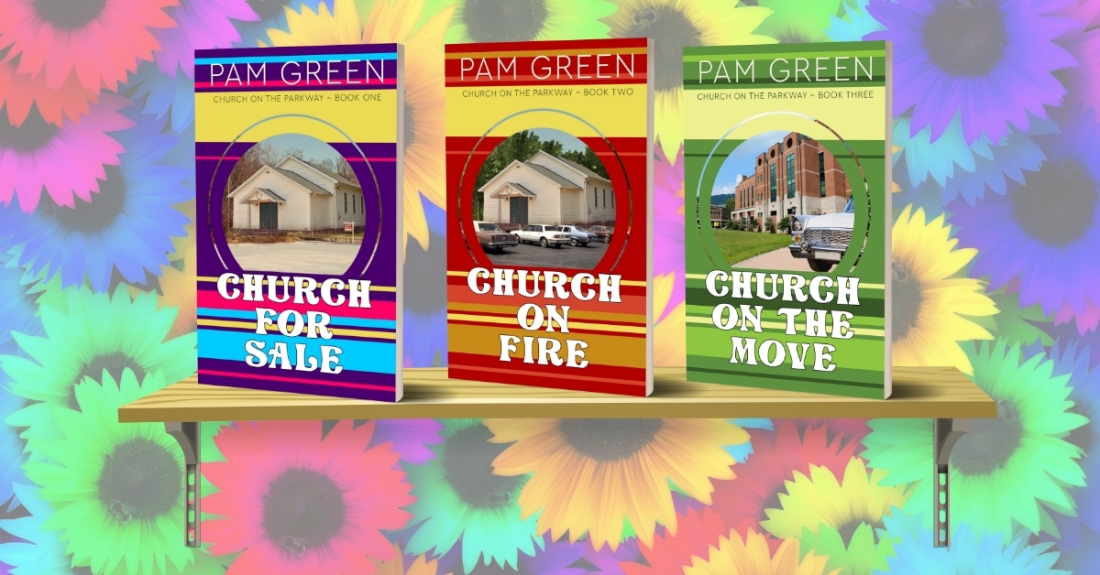Maybe you’ve read Church for Sale and wondered where the idea of a “church for sale” came from.
Maybe you long to be part of a Church on Fire.
Or, as the Church on the Parkway series wraps up with the publication of Church on the Move this month, you’re reflecting on the church you call home or the church where you grew up. Just where does it fit on the spectrum of for sale/on fire/on the move?
It’s okay, too, if you’re just plain curious about where the idea for the series came from! Since the story is set during my own teen and young adult years, how much of it is true? Did I ever attend a “church for sale?”
First, the fun part! The idea for Church for Sale came when I thought I’d never, ever have another story idea. As I drove down a local highway near home a few years ago, I noticed that the small, countrified church building with white siding had a sign out front:
Church for Sale
Coming Soon
“How sad! I wonder what went wrong,” I said to myself. This had to be bad news. After all, I’d visited a church-turned-bookstore in Ohio and seen on TV more than one church building that had morphed into a restaurant, nightclub, or family home. It speaks volumes about my culturally-conditioned low expectations that I didn’t say, “Wow! That church must be booming. I wonder where their new building will be?”
But I now had a new storyline nibbling away at my brain. Church for Sale was underway. What went wrong…and what could go right?
As you visit Open Door Church, you’ll discover that a church can be “for sale” in more than one way. The building itself can be on the market for various reasons, of course. But the living, breathing (or barely breathing) organism of that local church body can also be for sale. As we watch modern churches, we make lots of value judgments about whether they’re “doing well” or not. Sometimes, attendance is the yardstick we use. How full is the parking lot? Often, success is equated with running lots of “cutting-edge” programs.
The leaders of the early Christian church knew the church could be “for sale” long before they had buildings. They knew it could be sold back to anybody who could entice its members with a trendy philosophy, a tweaked theology, or a familiar tradition. What the temptation was didn’t matter as much as the fact that someone fell for it. Just read the New Testament letters.
Churches were for sale back then, and they’re still for sale today. Be alert!
On a much lighter note, I loved revisiting another era while I wrote these stories. Oh, the days of avocado-color corded phones and harvest gold refrigerators, fuzzy sideburns, and long bangs! When walking down the street in Washington, DC, you could count an equal number of suits and bell bottoms. On Sunday at 11:00 a. m., the organist might blast out the Doxology, or a guitarist might strum Paul Stookey’s “Wedding Song” at your college roommate’s wedding.
Yes, we had a Bernie Rush or two, and at least one Lacy Seamands entertained us–and often derailed us.
But we also had our faithful Myrnas, Brians, Matts, Effies, and Julies. Praise the Lord–we saw a Dennis, John, or an Ardis catch fire from time to time!
It’s because of them–thanks to them–that the Church on the Parkway series was born.
